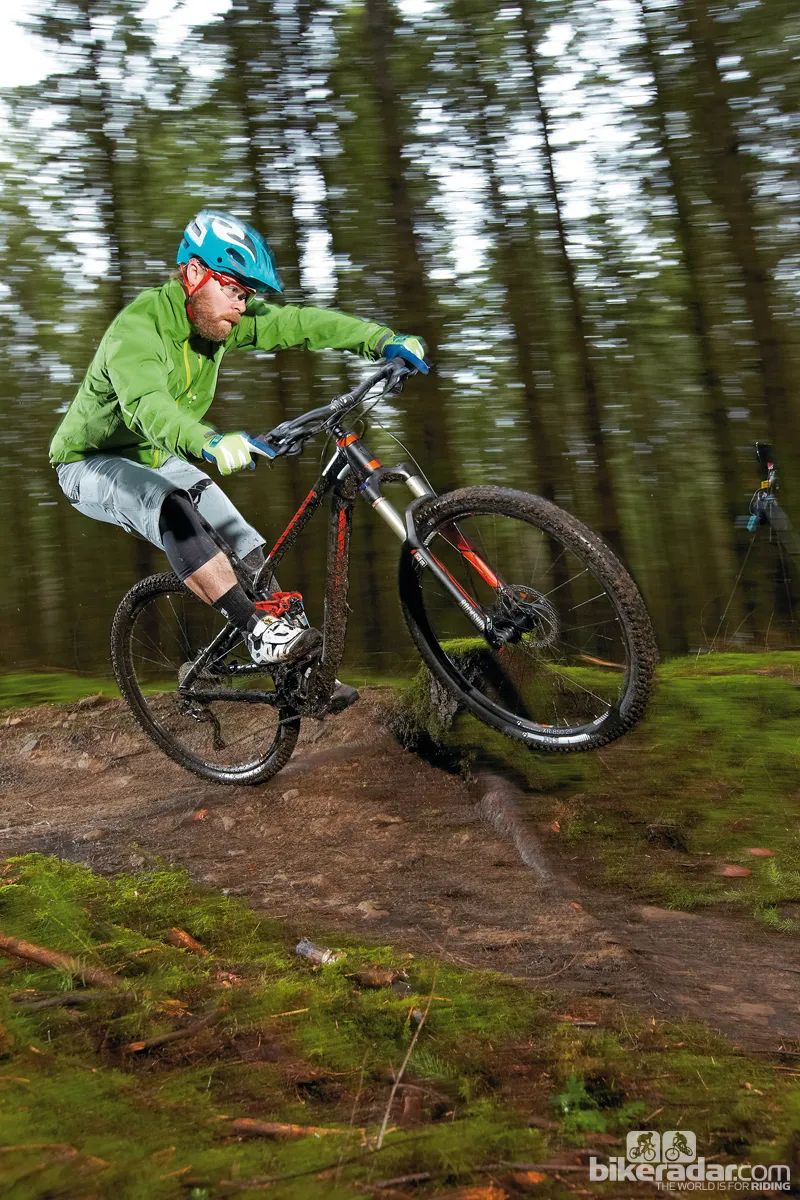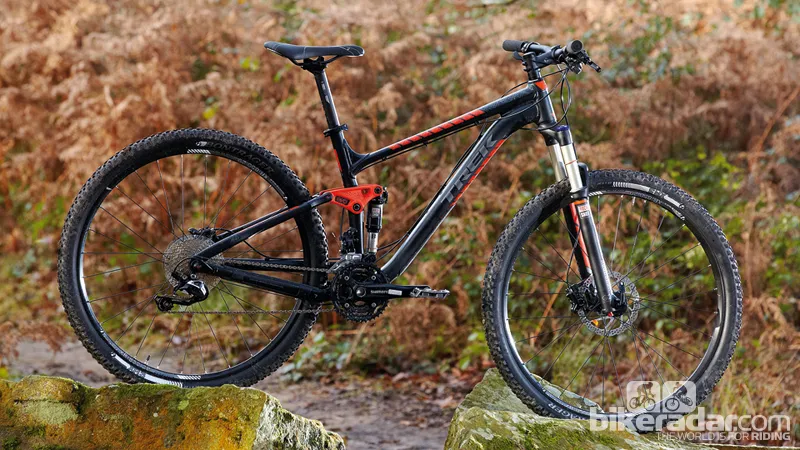Trek’s full-suspension range has been given a bit of a rejig for 2014, with a long-awaited 29er version of the ever-popular Fuel EX taking the place of the Rumblefish that was inherited when Trek took over the old Gary Fisher line up.
It’s worth noting that the Fuel EX is still available with good old 26in wheels too – something that’s suddenly not very common any more.
Frame and equipment: solid, reliable and dropper-post ready
Despite its freshly enlarged wheels, the bike is still recognisably a Fuel EX, sharing the general layout and tube shapes of the 26in-wheeled bike. Trek has put a lot of time into refining the Fuel over the years, and you can see it in the frame details. There’s very little gratuitous tube shaping here.
The down tube has a hefty double curve in it, but that’s to give clearance for the bottom of the rear shock at one end and the top of the fork legs at the other. What it doesn't have is a a hole in the seat tube ready for an internally routed dropper seatpost cable. It takes a 31.6mm post though, so it’s dropper-ready to that extent.
The Fuel EX 6 39 is equpped with a lot of Shimano Deore parts, which is all solid, reliable stuff. We’d like to see smaller chainrings than the standard 42/32/24t setup on a 29in-wheeled bike, and a clutch-equipped rear mech is notable by its absence, but everything here works fine and won’t let you down.
Trek is notable for offering more size options than most manufacturers. It doesn't don’t stop at just S, M or L – the Fuel EX 6 29 is available in a remarkable six sizes from a bijou 15.5in to a kaiju 23in. We really like the fact that there’s an 18.5in option nestling between the usual 17.5in and 19.5in sizes. It’s spot on for riders who usually find themselves on the cusp of M or L in most ranges.
That big size range, and the accompanying fitting expertise of the dealer, is part of what you’re paying for with a big, mainstream brand like Trek. Obviously if you don’t need one of the 'extra' sizes then you don’t get the benefit, but it’s a boon for those who do – many brands can only manage three, or at most four, sizes.
Ride and handling: sometimes slow to accelerate but it's great at carrying speed
The Fuel EX is a highly-developed bike. Even though the 29in version is new, there are many years of tweaks and refinements behind it. With an extra-long fork offset, the Trek strikes a great balance between agility and stability.
The front-end geometry gives the steering an almost uncannily light feel, which takes a little getting used to, but once you’re into it it’s extremely effective. There are few bikes (with any wheel size) that handle uphill switchbacks quite as well as this – the Fuel is great in the twisties.

With a regular RockShox Monarch shock out back, rather than one of the proprietary twin-chamber Fox/Trek DRCV units found on the more expensive Fuels, the EX 6 doesn’t have the simultaneously supple yet bottomless suspension feel for which the Fuel is renowned. It’s less noticeable on this 29in version though, with the easy-rolling big wheels doing more of the work over small bumps than on the 26in bike.
It takes a bit of effort to wind up to speed though, largely due to the wheels. Between them, the Fuel’s front and rear wheels come in at a substantial 5.9kg.You’d expect a 29er to have heavier wheels than a similarly-priced 650b or 26in bike, but the Trek’s hoops are disproportionately portly.
That extra rotating mass does hinder the Fuel under certain conditions. On twisty trails with lots of braking and accelerating, the Trek can’t keep up with lighter bikes, losing ground out of every corner despite its excellent handling.
Things even out when the trails open up a little – the Fuel’s very good at carrying speed through corners, and if there’s room to really let rip then it’ll charge through everything in its path.
